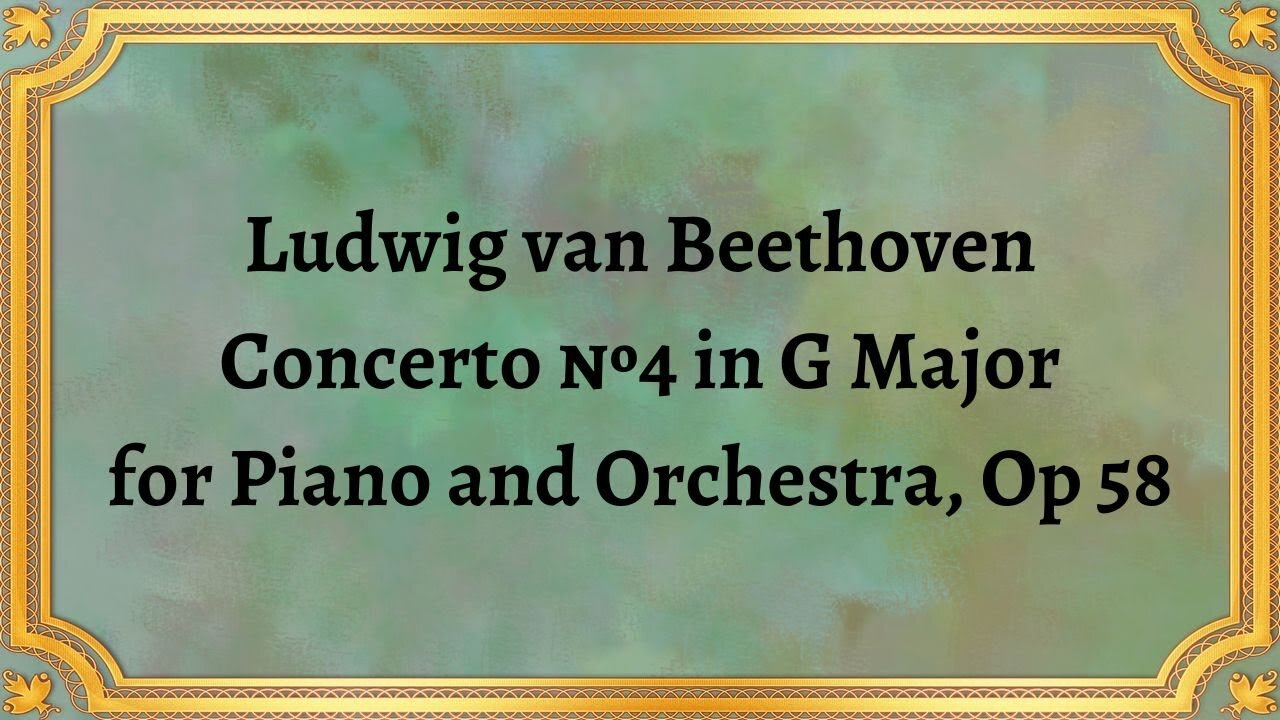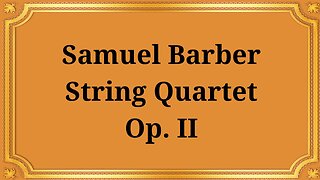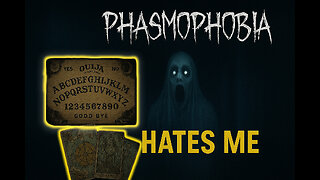Premium Only Content

Ludwig van Beethoven Concerto №4 in G Major for Piano and Orchestra, Op 58
#Beethoven #ClassicalMusic #ConcertoNo4 #Piano #Orchestra #GMajor #Op58 #MusicalComposition #LudwigVanBeethoven #Symphony
Publication date 1951
Friedrich Wührer; Tonkünstler Orchestra; Karl Randolf
Ludwig van Beethoven, an iconic figure in the history of classical music, composed numerous groundbreaking works that continue to inspire and captivate audiences. Among his remarkable compositions, Concerto No. 4 in G Major for Piano and Orchestra, Op 58, holds a special place.
Ludwig van Beethoven composed Concerto No. 4 in G Major between 1805 and 1806, during a pivotal period in his career. This concerto was written during the transition from his early Classical style to the groundbreaking and emotionally charged compositions of his middle period. It premiered in 1808 in Vienna and showcased Beethoven's virtuosity as a pianist and his innovative approach to orchestration.
Beethoven's Concerto No. 4 follows the traditional three-movement structure of a concerto:
a. Movement I - Allegro moderato: The concerto opens with a majestic orchestral introduction, followed by the piano's grand entrance. The movement unfolds with a dialogue between the piano and the orchestra, showcasing Beethoven's mastery of thematic development.
b. Movement II - Andante con moto: The second movement transitions to a lyrical and introspective theme, offering a moment of serene beauty and emotional depth.
c. Movement III - Rondo: Vivace: The concerto concludes with a lively and energetic rondo, featuring dazzling piano passages and a spirited interplay between the soloist and the orchestra.
Beethoven's Concerto No. 4 is scored for a full orchestra, including strings, woodwinds, brass, and percussion. The piano takes on a prominent role, engaging in a dynamic dialogue with the orchestra throughout the piece.
Beethoven's melodic lines in Concerto No. 4 are characterized by their expressiveness and richness. The harmonies are bold and adventurous, showcasing Beethoven's exploration of new tonal possibilities and pushing the boundaries of traditional classical music.
Beethoven's Concerto No. 4 represents a significant evolution in the piano concerto genre. Its introspective and poetic qualities, combined with Beethoven's innovative orchestration, paved the way for future composers to explore the expressive potential of the piano and its relationship with the orchestra.
Concerto No. 4 is renowned for its emotional depth and introspective character. Beethoven's ability to convey a wide range of emotions through his intricate melodies and harmonies resonates with audiences even today, making it a beloved staple of the classical repertoire.
The piano part in Concerto No. 4 demands exceptional technical skill and musicality from the soloist. It presents a formidable challenge, requiring the performer to navigate complex passages, display dynamic control, and convey the emotional depth inherent in Beethoven's composition.
Conclusion:
Ludwig van Beethoven's Concerto No. 4 in G Major for Piano and Orchestra, Op 58, stands as a testament to the composer's genius and his immense contribution to classical music. Its historical context, distinctive musical elements, and enduring significance make it a true masterpiece. Beethoven's innovative approach to the piano concerto genre, his emotional depth, and technical demands have solidified Concerto No. 4 as an essential work in the classical repertoire, inspiring generations of musicians and enchanting audiences with its beauty and power.
You have the opportunity to support the channel https://destream.net/live/RadSiarAl/donate
-
 16:45
16:45
Classical music_Music Inspiration
11 days agoSamuel Barber String Quartet, Op. II
552 -

TimcastIRL
2 hours agoTrump To Deploy National Guard To Chicago, Baltimore, Democrats Call To Resist | Timcast IRL
177K31 -
 LIVE
LIVE
Laura Loomer
4 hours agoEP141: Muslims Call For Political Assassinations At Michigan Palestinian Conference
1,065 watching -
 LIVE
LIVE
Barry Cunningham
4 hours agoBREAKING NEWS: PRESIDENT TRUMP IS GOING TO TAKE CHICAGO! LFG!!! (IT'S MOVIE NIGHT!)
5,475 watching -
 LIVE
LIVE
Man in America
6 hours agoTrump Demands Big Pharma Come Clean on Covid Shots w/ Dr. David Martin
1,018 watching -
 1:40:27
1:40:27
megimu32
2 hours agoOTS: Labor Day Sitcom Blowout - Tim, Ray, & Relatable Chaos!
12.2K3 -
 LIVE
LIVE
StevieTLIVE
2 hours agoWarzone Wins w/ FL Mullet Man
95 watching -
 1:04:01
1:04:01
BonginoReport
5 hours agoLefties Wish Death on Trump but He’s BACK! - Nightly Scroll w/ Hayley Caronia (Ep.125)
163K62 -
 LIVE
LIVE
Tundra Tactical
2 hours ago $0.48 earnedWe Survived the Military… But Not This Basement
108 watching -
 20:12
20:12
Clownfish TV
10 hours agoDisney Needs MEN Back?! They ADMIT Star Wars and Marvel are DEAD!
9.35K22